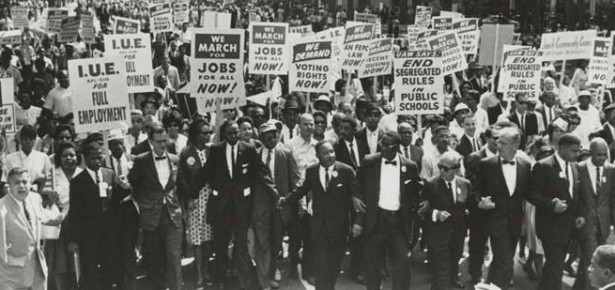
The nation’s been brewing for some weeks now over the Trayvon Martin case, and last weekend’s verdict of George Zimmerman as not guilty has much of the country up in arms. The court might feel justice has been served, but to many, it seems they have been operating under a different definition of “justice” than the rest of the country. Although the case has been closed, it’s clear that this ruling has little effect on quelling the public’s voice—if anything, it has made it more pronounced.
While some politicians might sit behind closed doors to discuss the “Stand Your Grand” law and institutionalized racism, masses of people have swarmed out of their houses to join in the growing protests. Last weekend in New York’s Union Square Park hundreds of dissenting citizens crowded the streets and marched. They chanted “No Justice, no peace,” and “We are all Trayvon,” and were adorned in Trayvon Martin tee-shirts and stickers. The action didn’t stop there; shirts and stickers could be spotted on every corner and in every store. It was impossible to not overhear a seething Martin-related conversation when walking down a street. Protests took place in dozens of other locations including San Francisco and Atlanta, some of which turned violent with the addition of fires and broken property.
Still, others remain off the streets and turn instead to the strength of the keyboard to voice their complaints. It seems as if no Facebook, Twitter, blog, or news site can remain untouched by the Trayvon Martin case. Social media sites make the public voice louder than ever before. Not only can a larger number of individuals easily publish their opinions, but these sites provide for instantaneous distribution and a wider audience base than previously imaginable. Social networking completely recreates the notion of active dissent. Ronald Collins and David Skover, authors of On Dissent, postulate that dissent requires intentional, critical, and public action; now the Internet takes “public” to a whole new level.
The speed and success with which the Martin protests organized is due largely in part to the Internet’s ability to quickly disseminate information. Weeks of planning are unnecessary when a Facebook event provides date, location, and invitation services in the click of a button. Any updated and relative information is traceable through keywords and hashtags. Although many individual voices are lost, the larger cloud is impossible to ignore.
No one can deny that this is just the beginning for these networking sites. Their influence on dissenting actions will grow as new programs are developed and new ideas created. It’s probable that these sites will change the way we organize and react to events such as the Trayvon Martin protests. Collins and Skover believe that America values and encourages dissent—perhaps these online forums will aid the American government in recognizing the dissent they protect with their Constitution, and hopefully this recognition will one day lead to faster and better social change.
To read more about the philosophical, legal, and cultural meanings of dissent in America, check out On Dissent by Collins and Skover, this month’s Cambridge Book Club pick.
Latest Comments
Have your say!